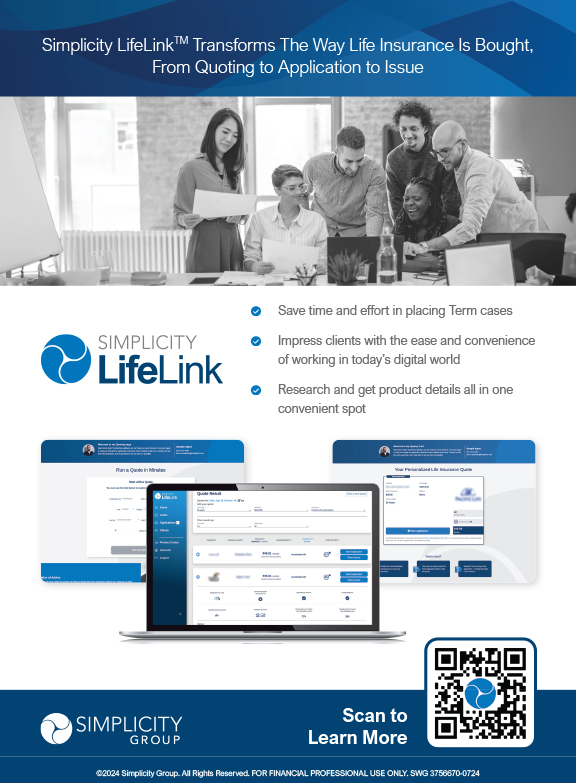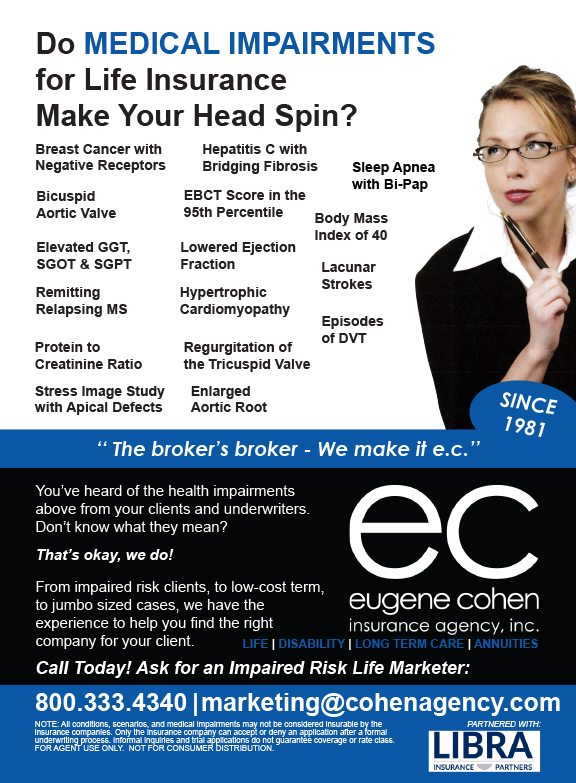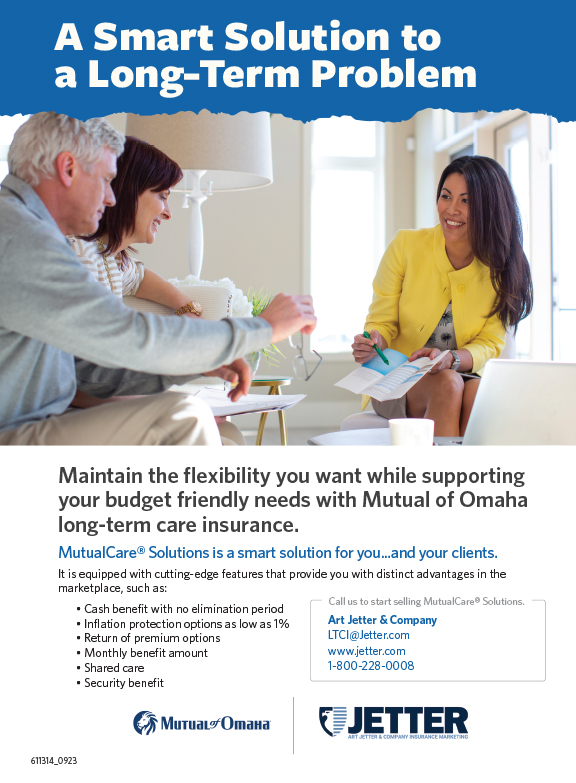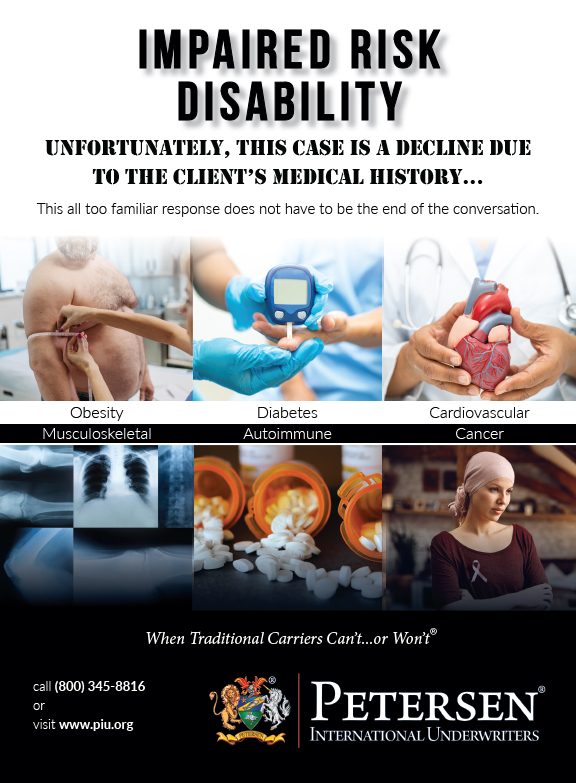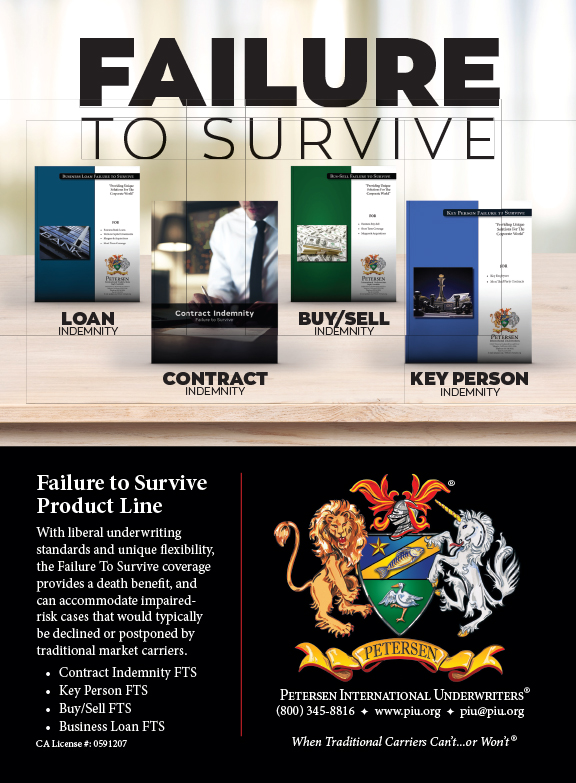Bob Barney
Compulife Software, Inc.
Search Engines
It’s been 30 years since I first recognized that micro-computers could be used to shop and compare the costs of life insurance products. It motivated me to start Compulife Software in 1982. Today, the idea of comparing life insurance by computer has evolved to the status of “self evident.”
If you have not yet arrived at that point, stop and put yourself into the shoes of the life insurance buyer. Doesn’t a consumer want to purchase life insurance from an agent who shops to get the best deal?
Apart from the actual job of shopping and comparing, the challenge for the agent is to demonstrate that he has shopped. It’s one thing to say you shop; it’s another thing to show the client that you shopped specifically for him. I’ve handed enough comparisons to consumers to know that they are impressed by comparisons which were done specifically for them.
Through the years Compulife has adapted to the changing technologies which allow for delivery of the proof to consumers. In the beginning that was the printing of the comparison on paper which had to be delivered. The next evolution was the creation of comparisons in file formats such as PDF. These could be emailed to the consumer. Today, at very little expense, agents can add live comparison software to their own websites, which allows the prospect or client to produce quotes himself. To say that internet marketing is on the minds of agents would be an understatement.
The biggest concern I seem to run into with agents adding comparisons to their websites is the notion that they don’t want a consumer to do a comparison unless the consumer has “signed in.” In other words, if the consumer doesn’t give the website his name and phone number (or email address) the agent doesn’t want the consumer to see a comparison. I think this strategy is a big mistake.
Free life insurance comparisons for website visitors should be thought of as the window display at the front of a retail store. Does everyone who walks past the window display go into the store? Does that make a window display a bad idea? But what if the consumer saw something in the display and went to another store and bought it? Just think of it, the store did all that work and somebody else got the benefit. Despite all that, stores continue to do window displays because the casual passer-by might see something that they like and come in. Store displays are like fishing with nets, not with a line and hook.
What makes a website good is that it has something of interest for visitors. What part of free live insurance comparisons isn’t of interest to people visiting insurance websites?
Which brings me to another very common question that I get from agents: “How do I improve my search engine rankings?” Apparently everyone wants to be on the first page of Google. One of the things search engines look at is traffic. Just suppose that hundreds of people visited your site to do free comparisons and only a handful actually bought life insurance.
What do you call that? Traffic. How bad is that? If you want search engine optimization, you need traffic, so whether you are in need of New York SEO or Texas SEO, you’ve got to be sure of what type of customer base and traffic you want coming in. And how much work did you do to serve up all those free comparisons? Virtually none. The work you do is to deal with the handful of people who actually saw something that they liked and contacted you. Thus, it is always prudent to contact digital marketing agencies similar to iTonic, or others in your vicinity. This could give your business the desired boost by assisting them to recognize the marketing goals and work on the same.
A small slice of a very large pie is much bigger than the whole of a very small pie!
Michael Sladek
EbixExchange
Data Transfer
Since the early 1990s brokers and agencies have been asking the question: “How do I get the carrier information about my cases into my system?” This holds true whether you are a broker or agent using a contact relationship management (CRM) tool or an agency, broker/dealer or wirehouse using an agency management system (AMS). Taking advantage of what carriers and service providers provide through the process we call data transfer can help independent distribution automate a number of their processes and reduce their work load.
Let’s start with the basics. Most carriers today provide some type of status feed for currently pending cases. We call this a pending data file. Today many independent producers and agencies manually update their system with case information by looking at the carrier website and updating the status in their AMS or CRM. That means if you do business with 19 different carriers you need 19 log-ins and have to go to 19 different websites. However, most vendors today have a way to automate this process and bring data directly into your system so it does not have to be re-keyed by someone in your office. This process can be a great time-saver and improve efficiencies.
Some distributors do not use the automated data feeds because they feel the carrier’s data is incorrect or their data is more current. This used to be true for many data feeds, but times have changed significantly. Additionally, carriers have started sending additional data feeds such as inforce, license and appointment information and commission data. By integrating these feeds into your daily routine, you will yield a significant increase in productivity and reduce errors in your system.
The new stuff: Some carriers have started integrating a process of two-way messaging into your AMS and CRM systems. Two-way messaging allows an agency or agent to respond to a carrier’s request for additional information. So, for example, if the underwriter notices that the driver’s license number is missing on an application. The underwriters can add driver’s license and state of issue as a requirement on the case. The requirement would come through the pending data feed directly into your AMS. The difference is that rather than emailing or faxing a response, the case manager can simply respond in the AMS with the information.
This process does two things. First, it eliminates the need to key the information in two locations such as the AMS and your email to the underwriter and, second, it automatically records the action taken and closes the follow-up. Carriers such as Prudential have been leading this effort for a few years and other carriers are quickly adopting the process.
Finally, we can’t forget our service provider friends. Suppliers such as APPS, Portamedic, Superior Mobile Medics, ExamOne and others have taken great strides to ensure you have the ability to order paramedical services directly from your AMS or CRM. This is one of the least utilized functions that AMS vendors have put into their systems, but one in which you can receive a significant benefit.
Your case managers spend most of their day in the AMS. Why should they have to log on to multiple provider websites to order services and APS requirements when it can be launched within the AMS? Again, this process gives you a double benefit: It orders the paramedical service or requirement, and it records that the action has taken place. During the order, the proposed insured data is automatically transferred to the order so it does not need to be retyped and the action of ordering the requirement is automatically recorded in your system. Finally, all status about the order will be sent back through the AMS and updated into your system automatically.
I urge you to take a new look at the data movement processes that your carriers, vendors and service providers have put in place. Contact your AMS vendor and see how you can add the additional feeds and services to your system; you’ll be glad you did.
Matthew Sapaula
Matthew Sapaula, Inc.
Social Media
Building and maintaining a positive awareness of the financial services our practices offer is becoming increasingly difficult. Newspaper headlines and daily television news continue to spread fear into the minds of Americans, and stories of people losing all their retirement savings and home equity have become common.
But what about the people who have not lost any money because of the ongoing work with their financial advisor or independent insurance professional? What about the people who are not just surviving through this recession but thriving?
From a marketing standpoint, amajor shift is occurring in how we research and receive information. Simply throwing money at a problem, like doubling the mailing for seminars, doesn’t always work the way you think it should. Businesses are having to spend more time conducting data driven marketing campaigns, and are getting good results from them. You can read more about data driven marketing here.
The ongoing development and business application of the Internet has created the ability to speed the process of how business gets done. And now, the phenomenon of social media platforms-that advertising has shifted toward-reaching the same eyeballs that were normally found reading the newspaper or watching television.
Facebook, Twitter and YouTube are no longer sites for our high school kids. Rather, they are a platform to research and deliver your marketing message faster and cheaper, and obtain real-time feedback. Technology today can help you avoid spending thousands of dollars and two weeks of valuable time to “test” if your latest seminar will be a hit sensation in your marketplace.
Until recently, most financial service firms had completely restricted their independent contractors from promoting their businesses and brand association through the portals of blogs and social media sites. As a breakout speaker earlier this year to a LIMRA Marketing and Research Conference, I found an eager audience of marketing executives indicating that this tide is turning.
For the past two years I have been tweaking my approach to gaining influence, increasing authority and sprinkling celebrity into how we attract our ideal client. This not only greatly reduced our traditional marketing expenses but filtered through the clients that we truly, genuinely enjoy working with-far beyond the revenue they represent in our book of business.
Today we live in an on-demand world. Here are a few things to make your clients and future clients feel an ongoing confidence in your practice and create raving fans that make it easy to refer business and opportunities to you:
1.?Share an Experience, Not a Transaction. Tell the world what you see through your eyes and experience without blatant pitching of your services. Unless you want to be viewed as a commodity and be shopped around to your competition, lead with genuine interest to the issues of your target market. With your website and Facebook profile, create short updates to daily issues that engage your followers. When you see something in the news, create an update that answers, “If they knew what I knew, what would they do differently?” People will “get you” and cold calls or uncomfortable rapport-building dialogue are a thing of the past.
2.?Engage Your Audience with Website Video. Uploading a two to three minute video of a problem you solve daily creates added curiosity and increased trust. Consider this your virtual handshake, a quick tour around your office, or a cup of hot chocolate on a cold day. This allows your website visitor to place a name with a voice and face. This gives them an opportunity to begin to know you, to like you, and to allow themselves to trust you-all without you having to do this yourself. People who were never meant to be your clients automatically opt themselves out and you begin to attract more deeply those that are.
3.?Freebies Online Versus Dinner at Seminar. Instead of feeding people and hoping they’ll set a meeting with you, give them a free report, you could work with a helpful podcast production company and give them the best free podcast possible, a free instructional video or free webinar, allowing them the opportunity to take you on a “test drive” without risk. Take those same dollars to build an email database that you can constantly update at your discretion without the high cost of direct mail. Over time, this attracts people closer to your message and speeds along a process that normally would take two hour long meetings involving your time and energy.
Does this take time to learn? Sure. But the sustainability of your business depends on your ability to grasp, learn and implement. In the words of Zig Ziglar, “Blessed are the learners, for they will inherit the world, while the learned are beautifully prepared for a world that no longer exists.”
With technology and social media sites growing constantly in our daily lives, our practice has to be found, or stumbled across, where the eyeballs are going. Today’s modern executive and evolving entrepreneur is tomorrow’s retiree. They behold not only your future opportunities, but a natural expectation for their trusted advisors to use technology as their friend, not their foe.








